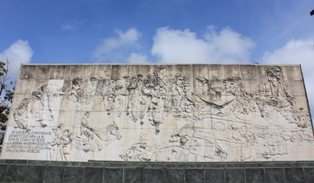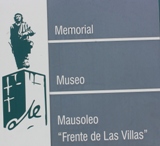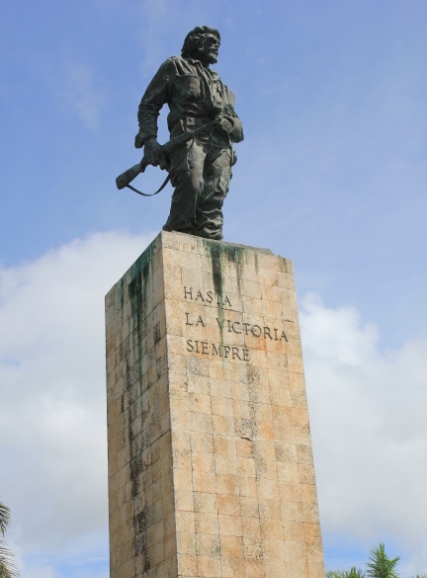NPCA Goes To Cuba! Part II

On Sunday morning we drove for two hours to the Che Guevara Mausoleum and Monument in Santa Clara. Here are the remains of “Che” and twenty-nine others, including one woman, who were killed in 1967 during Guevara’s attempt to spur an armed uprising in Bolivia. There is also a bronze 22-foot statue of Che in this monument complex. Guevara, who was born in Argentina, was buried with full military honors in 1997 after his remains were discovered in Bolivia, exhumed, and returned to Cuba. There is also an eternal flame lit by Fidel Castro in Che’s memory. Our guide told us that Santa Clara was selected as the site for the mausoleum and monument as a way to remember Guevara’s troops taking the city on December 31, 1958, during the Battle of Santa Clara. It was the final battle of the Cuban Revolution. After this defeat, Batista fled into exile.

What is particularly interesting to me was to see how much Che is remembered, recognized and idolized, particularly by young Cubans. He is the handsome young hero who died with his boots on fighting for the freedom of the peasants and the poor. And the Cuban Revolution, too, is recalled with the same sense of sentiment and nostalgia that the American South has for its Lost Cause. Fidel takes second place to this young revolutionary outsider, this lone cowboy, who we might say rode into Cuba to free the land from Batista and the American mafia running the gaming tables of Havana.
It is all very romantic.

There are many different versions of what exactly happened in Bolivia. Certainly, Che Guevara is a symbol.
Viva la revolution! Viva Che! Viva Los cuerpos de Paz!!
More to follow
..
Born in New York and living in Texas I really resonate to the comparision of Cuban nostalga for Che with the strong feelings of the Southerners, but I am uneasy with the status of the Causes.
As I see it Slavery and Apartheid are slightly more Lost (and less romantic?) than Equality, Sustainability, Universal Education, Universal Health Care and some (but perhaps not all) of the other Revolutionary Goals.
It may be a touch harder than Fidel and Che imagined to make socialism efficient, but at least they were trying to reach what I consider some very worthy Goals.
It is also hard to measure efficiency that accurately. How do you put Climate Change and Economic Crashes in the efficiency measurement?
Thanks John for the overview. What if anything did you bring back in regards to the the development of literature and the quality of life of their authors?
Cheers,
Mark
John: I’ve enjoyed the first two installments of your report on Cuba. Hope there are more. We visited the island last spring, when things were probably a bit cooler, but filled with much excitement because of the hope for improved US/Cuban relations. Like others, I’m concerned about your linking the successful Cuban revolution with the failed struggle by southern states to continue the system of slavery. We too saw the continued love and respect Cubans have for Che (along with Hugo Chavez, Fidel and Raul). However, to me, it remained me of how some Americans feel about Tom Paine and the boys who fought for freedom from the British empire.